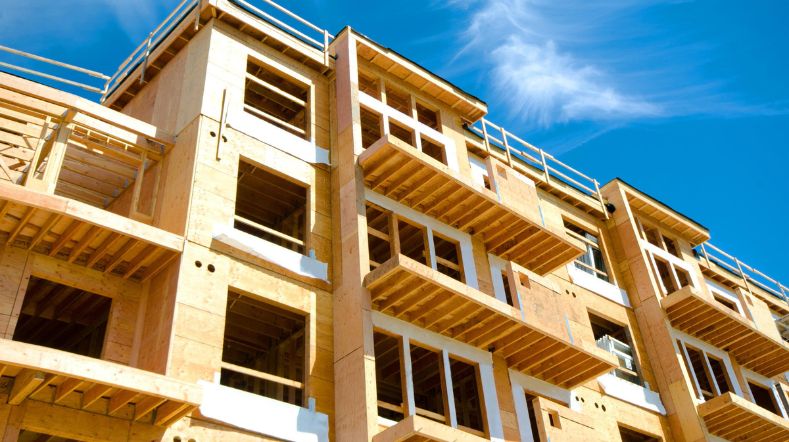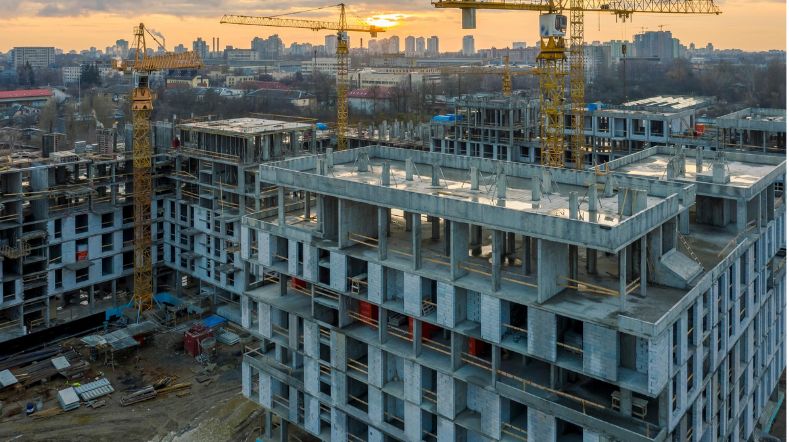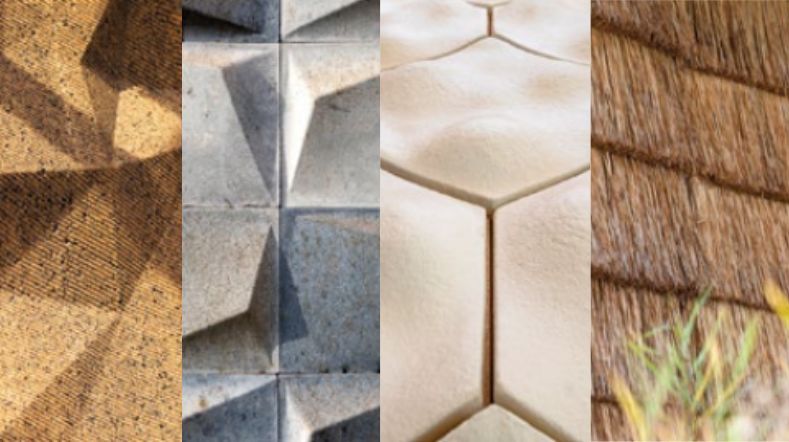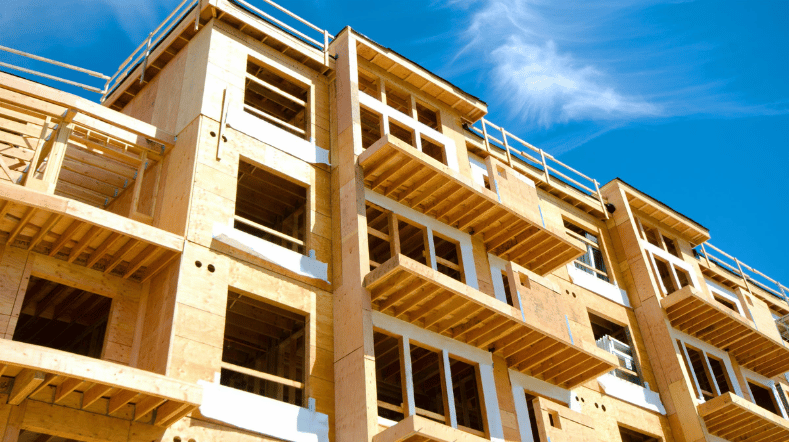
Building transition gets off to a quicker start thanks to Zero-Emission Construction
On 22 November a festive networking event brought the first part of the Zero-Emission Construction knowledge and innovation programme to a close. Over the past two years, 98 partners working on 21 sub-projects have successfully launched the transition to industrialised prefabricated construction and the use of bio-based materials. This has led to promising timber construction concepts and delivered new insights into emissions, materials, and production methods that will help the Netherlands tackle its housebuilding challenge and meet its emission targets.
Industrial modular prefabricated construction
The launch of the Zero-Emission Construction programme in 2021 was prompted by the nitrogen crisis and the growing housing shortage in our country. This broad knowledge and innovation programme of TKI Bouw en Techniek, set up with support from the Ministry of the Interior and Kingdom Relations and the Ministry of Economic Affairs and Climate Policy, consists of seven sub-programmes. TNO was put in charge of sub-programme 4, focusing on industrial modular prefabricated construction.
Mario de Rooij, Principal Project Manager at TNO: 'We developed the programme in just three months, which is an unprecedented time frame. Initially, the focus was placed entirely on nitrogen reduction, but at the time the programme got under way the permit exemption for temporary, construction-related nitrogen emissions was still in force. This meant that other challenges, such as the tight labour market and low production volume, were suddenly considered at least as urgent."
'The programme was therefore focused on industrialised prefabricated construction. The advantage of broadening the scope in this way is that you can work on both objectives at once. On the one hand, factory production of homes allows you to build more homes faster with fewer people, and, on the other, this efficient construction method also automatically reduces emissions.'

'If you want to reduce emissions, you first need to know what you are talking about.'
Insight into emissions
One of the main results achieved by the programme is the insight it has provided into emissions from the construction sector. 'If you want to reduce emissions, you first need to know what you are talking about. Within the construction industry there was hardly any knowledge about CO2, particulate, or nitrogen emissions', explains De Rooij.
As part of the programme, practical calculation methods and tools have been developed to gain a better understanding of emission levels, emission sources, and measures that will contribute effectively to their reduction. For example, TNO has developed a calculation tool that allows model emission calculations to be performed for the entire construction process, including construction logistics. This allows contractors, as well as commissioning parties and policymakers, to immediately see the positive impact of using electric equipment or a construction hub.
Another practical result of the programme is an open-source calculation tool that instantly shows what impact the use of bio-based materials has on BENG (nearly energy-neutral building), MPG (environmental performance of buildings), and CO2 calculations, as well as on development costs.
Biobased building with straw
In the end, 21 sub-projects were carried out in three rounds of calls, with the consortia achieving impressive results in an often very limited time frame. De Rooij: 'All 98 partners worked together very intensively. This resulted in knowledge sharing and close partnerships that would probably not have come about without this programme. In addition, Zero-Emission Construction has delivered many winners: parties that have brought promising concepts to market, sometimes in less than a year.'
One good example is Strotec, which uses straw as a bio-based construction material for prefabricated façade sections. Rob van Nistelrooij, owner of Bouwbedrijf Gebroeders van Herpen, a construction partner of Strotec: 'The starting point for this sub-project was the question of how to build a house that is as sustainable as possible using straw.'
'We also wanted to achieve a steeper learning curve with this construction method. And we managed to do that. In the meantime we have built a model home and, with TNO’s help, have developed a scale-up strategy. A blueprint has been created for industrialised production, which will allow façade sections to be manufactured for hundreds of homes every year.'
Building wooden schools
Another building concept that got off to a flying start thanks to Zero-Emission Construction is Circlewood, co-creator of The Natural Pavilion at the Floriade 2022 world exhibition. Director Karin Kuipers: 'As part of the programme, together with our partners, we were able to translate the experiences we had gained with the pavilion into two innovative building concepts within our HoutKern (Wood Core) Construction Method. Zero-Emission Construction has greatly accelerated and added a lot of depth to our project, allowing us to present a well-founded story to clients on timber construction.'
One of the two concepts for building schools will also soon become a reality. 'We are going to be building our first school – a wonderful milestone. Eventually, we would like to achieve a level of 20 to 30 schools a year. Scaling up in this way will be possible, as we have fully optimised the construction process with TNO. That’s the strength of this programme: as a consortium you can benefit from TNO’s collective knowledge and experience.'
Zero-Emission Construction magazine ‘NOx’ (in Dutch)
To mark the festive completion of this programme, TNO published a magazine in which all sub-projects and associated results are described.
Need to join forces
Zero-Emission Construction was co-funded by the Ministry of the Interior and Kingdom Relations. David van der Woude, Innovation in Construction Team Coordinator at the Ministry, was involved from the outset. 'I look back on this programme with a whole lot of pride. I think TNO has really pulled off something great. Among the participants I see lots of leading players within the construction industry and a diverse range of disciplines: bio-based materials, industrialised construction, and timber construction concepts.'
'There are all kinds of interesting developments that, in combination, can make construction more sustainable and more productive. Joining forces in this way is necessary if we are to tackle these major challenges successfully. I think it’s really impressive how all these different parties have set to work on them. This is also a result of the demand-driven approach. It increases the value that TNO adds, enabling companies to take extra steps.'
Support for scaling up
Having successfully completed the first part of Zero-Emission Construction, TNO, together with the Ministry of the Interior and Kingdom Relations, the Ministry of Economic Affairs and Climate Policy, and TKI Bouw en Techniek, is now considering how to follow it up. From 2024 to 2026 there will again be financial incentives available to support sustainable innovation in construction.
David van der Woude: 'You can see that the partners still have lots of ideas and research questions, especially in relation to the step towards scaling up. How can you offer a beautiful product, clean and emission-free, on a large scale? They need help with that, as well as facilities that are best organised centrally. A shared notion of quality vis-à-vis the market should also emerge from this, for example in the form of a quality label. As a client, you will then have certainty and guarantees about the product and its construction performance, and will be able to obtain it from a wider range of providers.'
The concrete principles and guidelines for Zero-Emission Construction 2 will be announced shortly, and tendering will begin in early 2024.
Knowledge sharing through magazine
Knowledge sharing is a key principle of Zero-Emission Construction. Results will continue to be available to all partners after the end of this first part. To coincide with the festive event that brought this programme to a close, TNO also published a magazine describing all the sub-projects and the results they achieved. Download the Zero-Emission Construction magazine ‘NOx’ (in Dutch) > (pdf)
Get inspired
Industrial and conceptual construction


Reliable Structures


Building materials


Building Materials and Structures


Western North Brabant becomes hotspot for biobased building blocks for the construction industry


